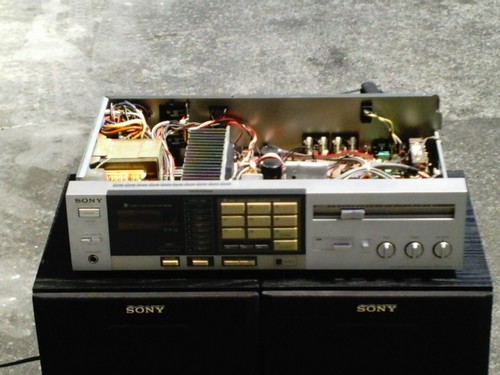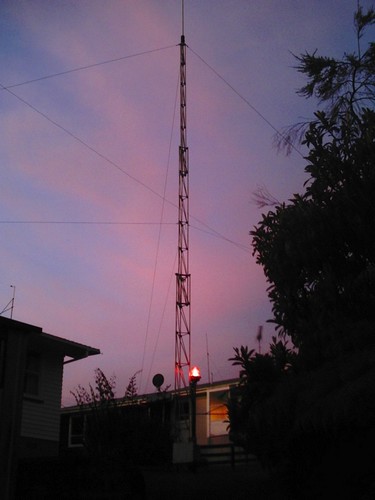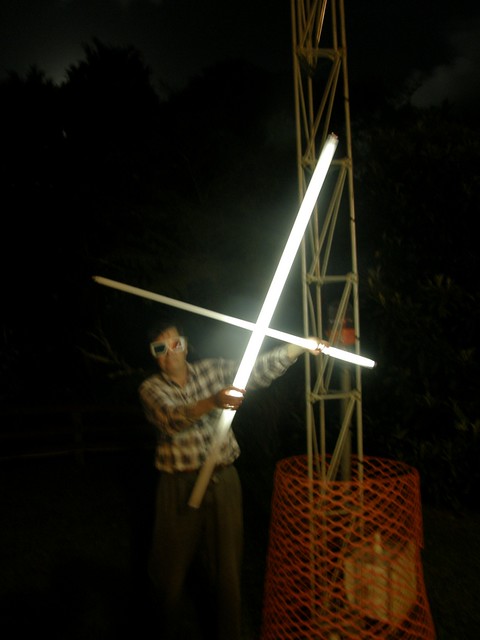Digital Radio Mondiale is an OFDM radio transmission scheme having provision for callsign ident, text, voice, data, moving & still images, in bandwidths from 2.5kHz (non-standard ham mode) thru 96kHz (DRM+ FM band digital radio). It can operate in a single frequency network (SFN) to reduce band congestion and work cleanly even over HF paths – raising the possibility of a Digital National System distributed via HF.
I embarked on a series of experiments to test it out....
Although the mode is long established here alongside AM on the HF broadcast bands, development of a viable portable radio capable of reception has not yet reached the marketplace. Two practical means for hobbyists are adding converters to a traditional radio or running a SDR such as the Softrock, Elektor or FiFi kits, in each method an audio range IF signal is processed by a PC to demodulate the information.
Using some excellent open source software written for DRM, I started some real world testing beginning with converting various receivers and construction of an IQ modulator/exciter to better explore the mode's capabilities.
The main software is
DReaM (early versions include a basic DRM30 transmitter mode),
SoDiRa which has DRM+ and useful analog rx modes,
Spark a versatile transmitter program.
For narrowband DRM these programs operate anywhere within the 0-22 kHz PC soundcard range.
Assembling the rx chain using an existing radio is relatively simple, tap in at IF prior to any excessively narrow filters then down - mix to the new souncard IF of 12 kHz – normally achieved with something like an NE602 mixer with 470 kHz ceramic resonator per various ccts. on the web. The radio needs to have a stable oscillator: some PLL are unsatisfactory for digital use.
Modern transceivers often have their DSP IF within the range for direct connection to a PC soundcard: best results were obtained this way. With availability of SDR kits and particuarly ones with built in USB soundcard, there is now no need to even modify a radio or build an IF convertor, but it will be necessary to control the reception with a keyboard and screen.
The Sony STR-VX20S I used also has enough room inside for a Mini-iTX PC such as Intel D525MW Atom to be installed, making it a fully functional box operated entirely with the original controls. It may also be possible to utilise some of the smaller cheaper ARM processor boards such as Via's APC or the RasPi, or an Andriod phone.
The 2011-2012 Pioneer range of car radios includes some models with Shortwave: such as MVH-1450UB, they cover almost all of 2.3 MHz to 22 MHz bands.
For the test transmitter suite, I constructed a conventional IQ modulator using a hybrid transformer and capacitors to supply two 90 deg. split local oscillator feeds, a pair of SBL1-1 mixers, filtering and linear amplifier stages. Final alignment is done in software, best with a dedicated PC as extraneous system alert calls to the soundcard during transmission are unacceptable.
It soon became evident that the high crest factor of OFDM signals is a real handicap when using a regular 100 watt transmitter: the average power sits at less than 10w before saturation occurs. Looking for a suitable tube linear, it just happened that the original transistorised (all 528 devices in the RF chain including the 384 finals) marine HF ssb transmitter from ZLW turned up on Trademe, I initiated a mission to rescue it with assistance from Steve ZL2KG.
 Transmitter Rescue, preparing to Spark into life (DRM30 transmission)
Transmitter Rescue, preparing to Spark into life (DRM30 transmission)
Completing the job calls for a
to do ham radio in the manner which
Comparison results over a skywave path to Mike ZL1BTB in Rotorua on spots above the traditional AM call frequencies in 160m and 80m bands, at the same 50w carrier power, favoured the DRM signal signficantly over regular dsb.
Mobile coverage is somewhat harder to evaluate due to the lack of any properly designed receivers in the market, AGC has an influence on the decoder performance so a mobile receiver needs to be more carefully engineered. Sony's models such as SW-7600G and SW-1 are a good reference design startpoint.
On air performance is quite encouraging, a significant drawback is the high crest factor restricting transmitter power to artificially low levels, so the near constant envelope modulation schemes such as QPSK & C4FM (P25) make for better DX, the tradeoff is poorer spectral density and higher bandwidth used.
 makings of a DRM Wireless
makings of a DRM Wireless IQ Modulator
IQ Modulator Proper Aerial
Proper Aerial Tesla intended
Tesla intended